
Plumber-Approved Water Saving Tips to Reduce Your Bill
Homeowners in the Dallas area know how precious water is, especially when summer days hit the triple digits and local reservoirs start to drop. Between

Homeowners in the Dallas area know how precious water is, especially when summer days hit the triple digits and local reservoirs start to drop. Between
Homeowners in the Dallas area know how precious water is,
A slab leak is one of the most frustrating plumbing
Every homeowner has experienced it, the constant and annoying sound
Your home’s main sewer line collects and removes wastewater from
*Limit one coupon per household/property. Coupons/discounts cannot be combined with any other offers. Restrictions may apply.
Legacy Plumbing HQ
1101 E Eldorado Pkwy
Little Elm, TX 75068
469-389-4020
Legacy Plumbing Frisco
15222 King Road, STE 1002
Frisco, TX 75034
972-752-6537
8:00 AM to 5:30 PM
Monday – Friday
Legacy Plumbing HQ
1101 E Eldorado Pkwy
Little Elm, TX 75068
(972) 801-9798
Legacy Plumbing Frisco
8765 Stockard Dr # 104,
Frisco, TX 75034
(972) 801-9798
7:00 AM to 8:00 PM
Monday – Friday
The majority of homes built in North Dallas have copper water pipes that run underneath slab foundations.
Legacy Plumbing has specialized in slab leak detection and repair for over 15 years, and we have more expertise in this area than any other plumbing company in the metroplex. If you want to know more about slab leaks and the signs you need to look out for, read this article.
By the end of the article, you will have a comprehensive understanding of the common slab leak signs for slab foundation homes in the North DFW area. You will not be caught off guard when this happens to your home. You also will not have to be anxious if any of these signs appear because you will have the knowledge to take the next steps with confidence. Here is a summary of what we will cover:
There are a few things that you’ll need to understand about plumbing and basic home construction to have insight into what potential your home has for slab leaks.
First, understand the difference between the sewer system and the water supply system of your home. Then, learn about the materials these pipes are commonly made of, how they are typically installed, and which are more likely to leak. Finally, put that information into the context of when your home was constructed, what type of foundation you have, and what the repair history is for your home.
The typical suburban DFW house is supplied with water by the municipal water company. The amount of water used is measured by a water meter located where the main water line comes into the property (usually near the street). The water lines hold a pressure of anywhere from 40-100 PSI (on average) in this area, and this pressure keeps water flowing through the entire system.
The sewer system, on the other hand, is made of large PVC or cast iron pipes. (Cast iron pipes were used for homes built before 1986.) Unlike the water system, there is no pressure pushing the waste through these pipes. All of the pipes slope downward so that the waste flows by gravity out to the sewer pipes serving the subdivision.
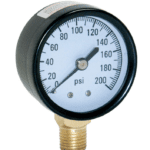 When the pressurized water supply pipes start to leak, they will leak all the time. It does not matter whether anyone is using the faucets or not. This can put a massive amount of water into the ground very quickly. When the sewer pipes break and start to leak, on the other hand, they will only leak when someone is using the system, and they will not leak any more water than what is put down the drain.
When the pressurized water supply pipes start to leak, they will leak all the time. It does not matter whether anyone is using the faucets or not. This can put a massive amount of water into the ground very quickly. When the sewer pipes break and start to leak, on the other hand, they will only leak when someone is using the system, and they will not leak any more water than what is put down the drain.
While both types of slab leaks are problematic and can lead to foundation damage, we’re going to mainly focus on pressurized water supply pipe leaks in this article. These types of slab leaks have signs which are much easier to identify without special tools. The urgency of these types of leaks tends to be much higher as well.
There are two main water piping materials found in North Dallas homes that were built over the last 60 years: copper and PEX.
 Copper was used from the 1950s/1960s up until about 15 years ago when it started to be widely replaced by PEX – a type of plastic. Copper makes a fantastic water line, but it has limitations. Copper pipe is very susceptible to kinking and damage during installation as well as corrosion and erosion over time depending on how it was installed. Almost without exception, copper was installed under the slab in straight lengths of pipe. The straight sections do not have any fittings or connection points below the slab. These pipes come up above the slab to feed the plumbing fixtures and to branch off into other pipes at connection points called manifolds.
Copper was used from the 1950s/1960s up until about 15 years ago when it started to be widely replaced by PEX – a type of plastic. Copper makes a fantastic water line, but it has limitations. Copper pipe is very susceptible to kinking and damage during installation as well as corrosion and erosion over time depending on how it was installed. Almost without exception, copper was installed under the slab in straight lengths of pipe. The straight sections do not have any fittings or connection points below the slab. These pipes come up above the slab to feed the plumbing fixtures and to branch off into other pipes at connection points called manifolds.
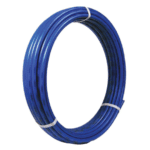 PEX water lines completely replaced copper water lines in the mid-2000s. PEX is cheaper, quicker to install, and does not corrode like copper does. While it does have drawbacks of its own, PEX has been in use long enough to be widely considered far superior to copper for water lines. Unlike copper, PEX is mostly installed in the walls, in the attics, and between floors. For this reason, finding a slab leak on a PEX is exceptionally rare.
PEX water lines completely replaced copper water lines in the mid-2000s. PEX is cheaper, quicker to install, and does not corrode like copper does. While it does have drawbacks of its own, PEX has been in use long enough to be widely considered far superior to copper for water lines. Unlike copper, PEX is mostly installed in the walls, in the attics, and between floors. For this reason, finding a slab leak on a PEX is exceptionally rare.
Now that you understand some basics about your home’s plumbing, here is a quick summary of some of the major risk factors for slab leaks:
Hot water pipes have some special signs that we will cover in the next section. For now, we will stick with “universal” slab leak signs. This does not mean that all slab leaks will manifest these signs, but these things can be indicators of either hot or cold water slab leaks. We are going to cover the sounds that leaks make, high water usage signs, and water damage inside and outside the home.
Hissing noises are one of the most commonly reported symptoms of a slab leak. Copper is an excellent sound conductor, so the hissing sound a leak makes will travel many feet along the pipe and even become amplified at places like shower valves and fixture shut-off valves (angle stops).
If you think you hear this sound, there are a few steps you can take to narrow down the source and eliminate other potential sources:
 Next, listen carefully and systematically under all the sinks, behind all the toilets, and at all of the shower valves in the general area of the sound. Get your ear as close to the fixture shut-off valves as you can. Listen for any spot on the plumbing system where the sound is noticeably louder than everywhere else. If you can confirm that this is the case, there is a strong likelihood of a slab leak.
Next, listen carefully and systematically under all the sinks, behind all the toilets, and at all of the shower valves in the general area of the sound. Get your ear as close to the fixture shut-off valves as you can. Listen for any spot on the plumbing system where the sound is noticeably louder than everywhere else. If you can confirm that this is the case, there is a strong likelihood of a slab leak.If you received a high water bill in the mail that wasn’t caused by a lot of lawn watering or high usage events (like filling up a swimming pool), you may wonder if this is being caused by a slab leak.
The first thing to do is analyze your water bill and make sure the increase in cost is actually due to a steady increase in usage. Sometimes, a utility price change can throw people off. It is also helpful to compare the usage of the current month with historical seasonal usage trends.
If a further investigation into the bill and water usage history still leaves a mystery, the next step is to rule out any above-ground leaks. Double check all of your faucets and fixtures to make sure none of them leak. It is very common to have a lightly running toilet that does not get noticed for quite some time. This can use a surprising amount of water! Sometimes outdoor hose faucets or guest bathroom tubs will also have a slow leak that does not get caught right away.
After making sure no above-ground fixtures are leaking, you will also want to walk around the yard and search for any soggy spots where the irrigation/sprinkler lines are. A leaking sprinkler solenoid valve is another common source of high water usage. (Watch this YouTube video on how to isolate the irrigation system.)
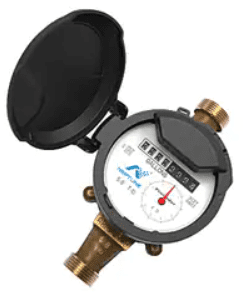 If everything still checks out, check your water meter. It is usually located under a metal or plastic circular lid out by the street. Check the flow indicator to see if it has any constant movement to it, however small it may be. Another way to check is to write down the current reading on the meter, wait for about 15 minutes (without using any water), and then go back to see if the reading has changed at all.
If everything still checks out, check your water meter. It is usually located under a metal or plastic circular lid out by the street. Check the flow indicator to see if it has any constant movement to it, however small it may be. Another way to check is to write down the current reading on the meter, wait for about 15 minutes (without using any water), and then go back to see if the reading has changed at all.
If the meter is spinning, that indicates a leak somewhere on the property. There are still many checks that should be made before this is determined to be a slab leak. Although it is not very common, sometimes a slab leak can be small enough that the water meter does not register any flow. Ergo, if the meter is not spinning, there could still be a slab leak.
In summary, checking the meter and the water bill is a good starting place in the absence of other forms of evidence, but it is not very conclusive by itself.
Sometimes the soil under a slab absorbs all of the water from a slab leak. When this happens, there are often no signs or damage caused by the leak that appear inside the home. However, it is common for a slab leak to show itself inside the home as it gets worse.
There are many penetrations through the slab where water can force itself upwards once the soil gets too saturated. Everywhere a pipe goes up through the concrete, there is an opportunity for water to rise to the surface. Hairline cracks in the concrete slab can allow water to come up as well.
When this happens, water often seeps along walls for some distance and under flooring before discovery. Some people come across a slab leak by stepping onto wet carpet in the closet. Sometimes people notice a slight buckling of their hardwood flooring that gradually gets worse.
Occasionally, the water can soak into the baseboards and cause swelling or wick up into the sheetrock wall and cause a soft spot in the gypsum (although flooring damage is usually noticed before this).
Another sign you can look for if you suspect a slab leak is soil saturation directly outside the foundation’s edge. While this can be caused by leaking irrigation pipes or the main water line in the yard, a heavily saturated area right along the edge of the slab is often an indicator of a slab leak on a water pipe in that general area under the slab.
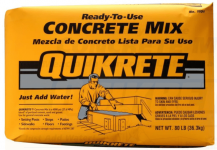
Unfortunately, a slab leak can often cause shifting of the foundation itself. If a large volume of water suddenly appears underneath a part of the slab, it will cause the soil to swell significantly. This immense hydraulic pressure can cause the concrete slab itself to heave slightly. Doors and windows may start sticking or becoming hard to close. Cracks may appear in the sheetrock if the movement is bad enough.
While a leak on a hot water pipe under the slab may exhibit all of the signs listed above, there are some other signs that appear only for hot water leaks. Interestingly enough, hot water slab leaks are much more common than cold water leaks. There are several reasons for this.
The first is that heat increases the speed of corrosion – it is a chemical process. Any corrosive action of the water (or the soil the pipe is buried in) will be accelerated by the heat of the water flowing through the pipe.
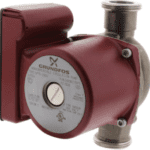 Another reason hot water slab leaks are more common is that many homes (especially those with a square footage larger than 3000) have a hot water recirculation system. A pump (usually mounted next to the water heater) will circulate hot water through the home on a timed or continual basis. This constant flowing of water also tends to accelerate the corrosion process as well.
Another reason hot water slab leaks are more common is that many homes (especially those with a square footage larger than 3000) have a hot water recirculation system. A pump (usually mounted next to the water heater) will circulate hot water through the home on a timed or continual basis. This constant flowing of water also tends to accelerate the corrosion process as well.
Finally, the most prevalent reason slab leaks happen more often on hot water lines is due to old water heaters. Water heaters are made out of steel tanks. Once the protective liner of the tank erodes, the water will start to rust through the tank itself and create particles of iron oxide.
These rust particles often flow into the copper water lines and settle to the bottom of the pipe where they form corrosion “hot spots” along the pipe. The water heater will completely rust out, start to leak, and be replaced. Then a few years later, a slab leak develops on the water line. Of all the hot water slab leaks, the majority appear on the copper water lines leading directly from the water heater manifold to another place in the home.
 A warm spot or hot spot on the floor is one of the slab leak signs that homeowners often notice first. Hot spots are more quickly and easily noticed on tile flooring where there is a thermally conductive path from the soil under the slab to the surface of the flooring.
A warm spot or hot spot on the floor is one of the slab leak signs that homeowners often notice first. Hot spots are more quickly and easily noticed on tile flooring where there is a thermally conductive path from the soil under the slab to the surface of the flooring.
If you notice a warm spot on the floor that seems to persist both day and night, do not ignore this! Feel carefully around on the floor with your hands to see if the warmth is concentrated in a particular area. If the spot stays the same or gets worse, this is almost definitely a slab leak.
If you have one, use an infrared thermometer to pinpoint exactly where the tile is the hottest. It can be helpful to put little pieces of masking tape at the spots where you take a temperature measurement and write the temperatures on the tape. This will allow you to see if it changes at all over a couple of days.
A hot water slab leak will naturally make the water heater work harder because it is constantly losing water into the ground. You may notice your water heater is firing more frequently (or even running all the time) even though no one has been using water at any of the faucets.
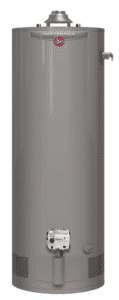 If it has been hours since you last turned on a hot water faucet and the hot water pipe coming out of the top of the water heater is scalding hot, this may be another indicator that there is a slab leak.
If it has been hours since you last turned on a hot water faucet and the hot water pipe coming out of the top of the water heater is scalding hot, this may be another indicator that there is a slab leak.
The water heater may have a hard time keeping up with this constant usage. You may notice that the hot water runs out a lot more quickly than it used to and you have to take shorter showers.
Ironically, you may notice that you do not have to wait as long for the water to get hot. Usually, there is a lag time between turning on a hot water faucet and feeling the water get warm while the water flows from the water heater to the fixture (unless you have a recirculation system).
If the wait time is a lot less than it used to be, that can also be symptomatic of a hot water slab leak. The leaking pipe under the slab keeps water flowing and behaves almost like a partial recirculation system.
If you think you might have a slab leak and need some guidance on what the next steps are, we’re here to help! We have some more information on our website that will help you navigate the uncertainty surrounding a potential slab leak.
How to Fix a Slab Leak: The Top Four Ways – This blog article goes into a lot more depth about the options available for slab leak repair. Each of the four main approaches is outlined along with its pros and cons.
Also, feel free to call us if you have any more questions or would like pricing for slab leak diagnosis and repair. Our master plumber or one of our slab leak specialists can talk with you about your particular situation: (972) 801-9798
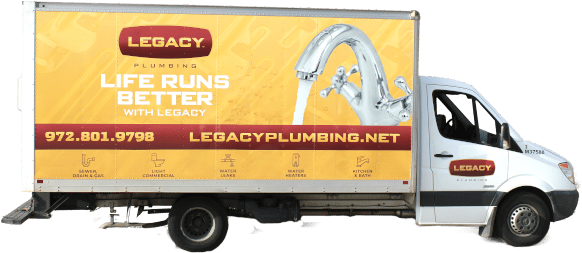
If you found this helpful, please take a minute to share it on social media. Also, feel free to pass this content along to friends/family/clients of yours who may find this helpful.
Headquarters
1101 E Eldorado Pkwy
Little Elm, TX 75068
Frisco Location
8765 Stockard Dr # 104, Frisco, TX 75034
Service Available
8:00 AM to 5:00 PM
Monday – Friday
Advocates On Call
7:00 AM to 8:00 PM
Monday – Friday
7:00 AM to 5:30 PM
Saturday – Sunday